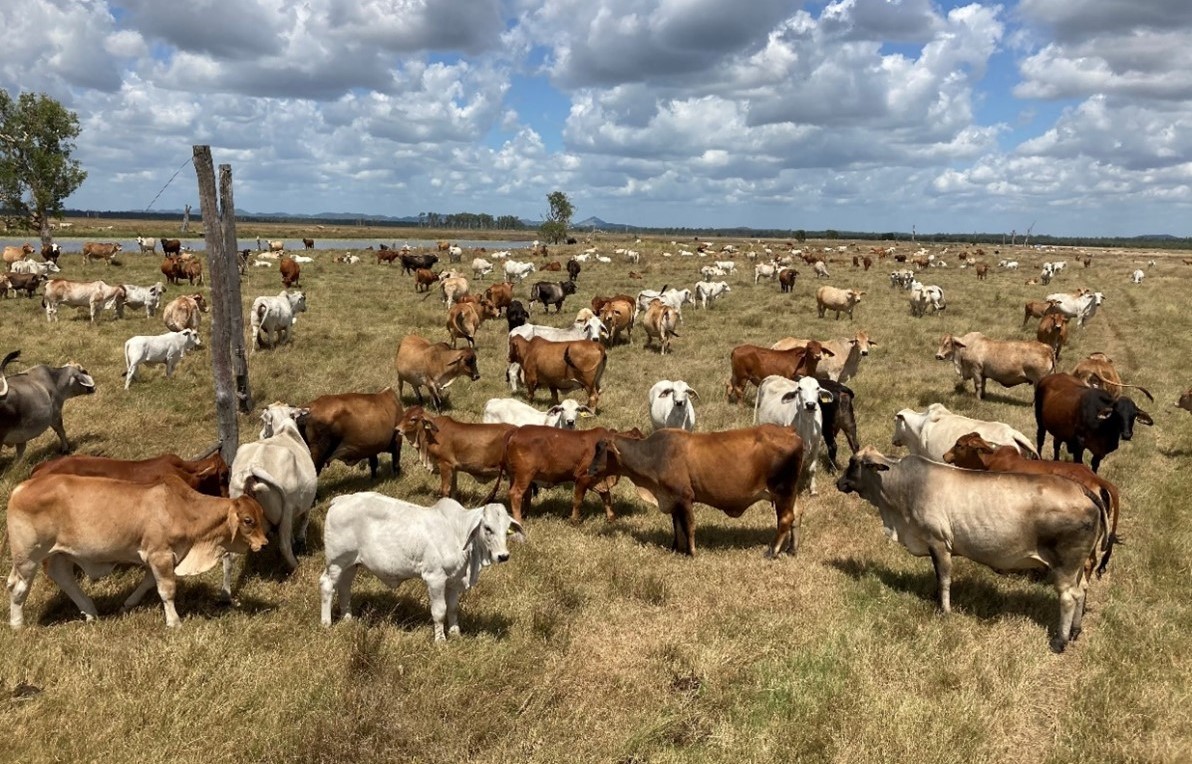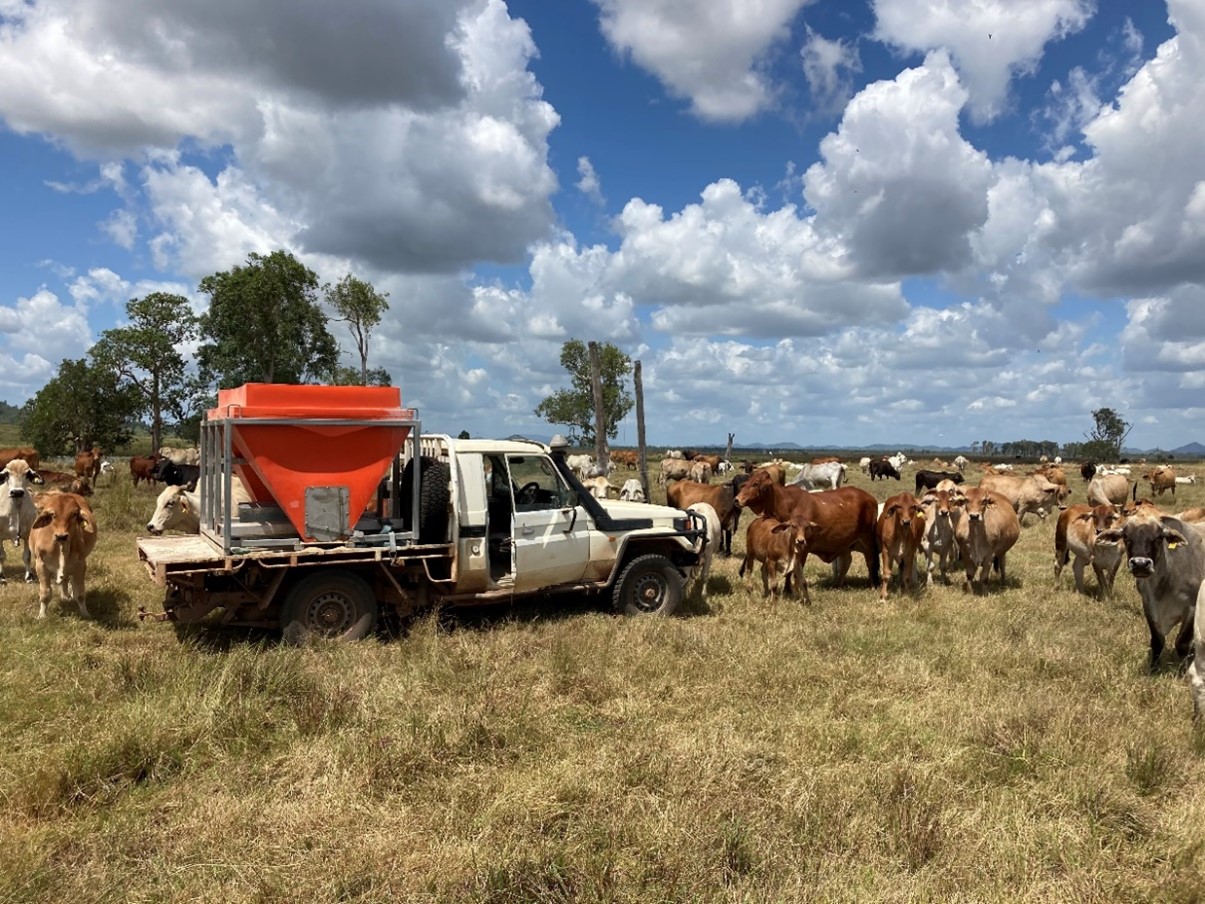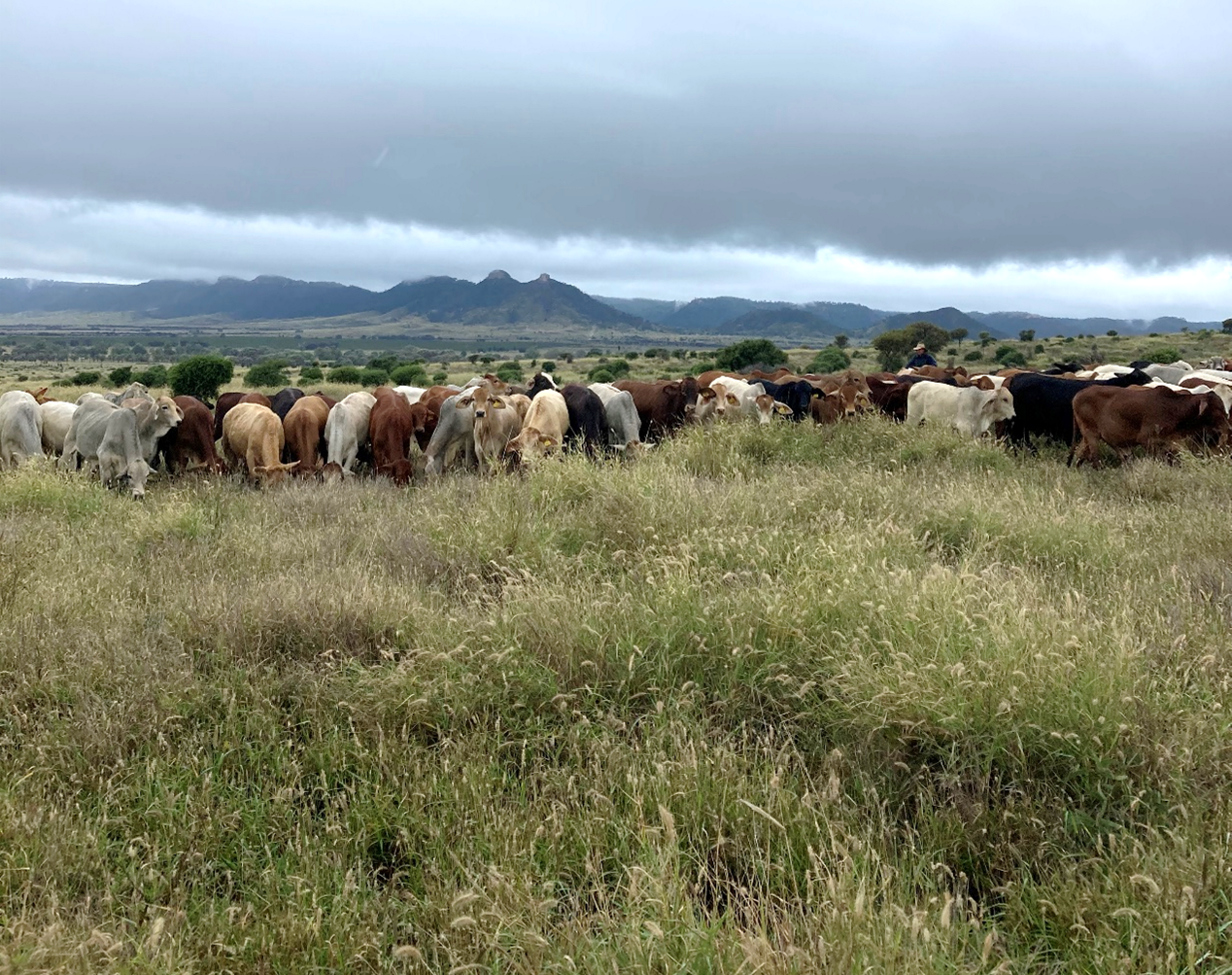A coastal P-change for the Price family
The Price family have implemented phosphorus supplementation, vaccination, parasite management, control mating and objective bull selection on Greenlake Station, Rossmoya.
The Price family purchased Greenlake Station north of Rockhampton in 2021, to complement their Arcardia Valley properties Hillyvale, Tarcoola and Korcha.

With challenges come opportunities
“Our family has been in the Arcardia Valley for 59 years. We run an organic breeding, growing and fattening enterprise across our three properties,” said Owen Price. “We were looking for some more country to continue business expansion and Greenlake really caught our eye. The country is green for most of the year and has lots of water. We knew that coastal country would have its own management challenges, but we saw opportunities to further develop the country and increase its pasture production and cattle turn off.”
Greenlake is a 7,675 ha property dominated by land types common to the central Queensland coast including; Blue gum/river gum flats, Coastal tea tree plains, Coastal eucalypt forests and woodlands and Loamy alluvials. Coastal country is widely known to be low in phosphorus (P) and traditionally the large property had been run as a year-round mated herd producing weaners for the local store market.
“Our plan is for Greenlake to supply weaners to our properties in the Valley and produce more feeder cattle from our whole operation. Our priorities for the first 12 months at Greenlake were to implement P supplementation, vaccination and health treatments, move towards controlled mating, and purchase some new bulls,” said Owen.
The Price family started at Greenlake with 1,700 Brahman cross females and 60 bulls. P supplementation was first on the agenda, in fact, lick troughs and a P lick were ordered before the property officially changed hands. The first 10 tonne of lick arrived the day they took over.

Fine-tuning the lick intake
“We knew we had to feed P, so approached FeedPro at Gracemere and asked for a P mix. The starting mix was 9% P, 12% calcium and 5% salt. It also contained rumensin. We found that the consumption was quite good, but after we got through that first batch, the consumption dropped right off. We knew the cows weren’t getting enough P but weren’t sure how to tweak the mix. I knew DAF helped people will cattle nutrition, so I gave Kylie in the Rocky office a ring.”
“P supplementation can be tricky,” said Kylie. “The aim is to get the required amount of P into cattle in the most cost-effective way. Most cattle will not eat a P source on its own, so we add an attractant to the mix – usually salt or protein meal. We generally find that salt doesn’t work as well for coastal cattle, so I suggested to Owen that the salt be dropped out and protein meal included instead. The extra calcium and rumensin were also not needed for this country.”
Based on discussions and calculations with Kylie, the next Greenlake mix contained 11% P with protein meal, no salt and less calcium. Kylie explained “We needed this mix to be quite palatable because on the P deficient country we were aiming for cows to eat approximately 10 g of P per day. With this mix, cows would need to eat 90 g of supplement per day.”
Owen said that they also experimented with protein meals to find what their cattle would eat most readily. The final supplement mix contained cottonseed and canola meal. The P source is both Kynofos and DCP.
“Over the first few months of 2022, the cow/calf units on the more deficient country were eating 20 g of P per day. We thought this might be a bit high but talking with Kylie, we think it’s about right,” said Owen. “The weaners we pulled off those cows averaged 220 kg and growing, so they would need a lot of P too.”
Kylie commented, “A 400 kg lactating cow on deficient country needs 9-10 g of P per day. Add in a 200 kg weaner growing at about 0.9 kg per day that needs 9 g of P, and we are not too far off the mark with the current consumption of 20 g of P per day.”
Owen commented on how accommodating FeedPro had been with developing the new mixes. “I’m very grateful to be doing business with a company who was happy to work with me to create a product that suits my cattle.”
The results of the P supplementation program can easily be seen in the cattle – body condition score and weaning rates are very good.
“We have a 73% weaning rate and the cows weaned in May 2022 are body condition score 4. We are really happy with the results of the P supplementation program,” said Owen.

Breeder management to suit conditions
Although feeding a P lick was first on the agenda at Greenlake, the Price family had plans for the breeder herd too. One month after the first P was fed, the whole property was mustered. All cows that were dry and empty were sold, along with about half of the bulls which were culled for age. The remaining bulls were taken out from the cows in preparation for a September joining. All cows were vaccinated for 7 in 1 and botulism, and treated with Acatak™ for ticks. Belmont Red bulls were purchased for the 2021 joining season.
“We selected 22 Belmont Red bulls based on EBV data. We were looking for bulls with negative days to calving and positive growth EBVs. Our plan is to gradually move towards a control mated herd, so we put bulls out September 2021 to February 2022. The older bulls with one mob of cows and the new bulls with another mob. Next year we will cull some more of the original cows as we have replacement heifers coming through and we will tighten the joining a little more, probably take the bulls out in late January,” said Owen.
Moving from a continuous mated herd to a control mated herd has its challenges that the Price family have considered.
“We have to manage the size of the breeder herd, weaning dates, number of replacement females, amongst other things. Some cows might take a season or two to fall into line, and some won’t at all. We will select for fertility and growth. The goal is to have a Belmont Red x Indicus female herd that is yearling mated and produces consistent weaners in a three month joining period, that we can background on our properties in the Arcadia Valley. We want a line of females that are adapted to this country with early puberty and higher inherent fertility. That is what we will be selecting for.”
Calving time is also an important element of the breeding plan.
“The risk of flooding here on our lower country has made us think about how we manage the herd at different times of the year. In the right conditions we can get a flood at any time of the year. We’ve been here less than 12 months and we’ve already had water on the flood plain in November, April and May!”
Best practice in most areas of Central Queensland is for joining to be planned so that cows calve about 6-8 weeks before the Green Date. In this region, the Green Date is defined as the date when there is a 70% chance of 50 mm of rain over three days. This means that cows aren’t lactating for too long before there is good probability of having green feed.
Flood country however, can be a challenge, explains Kylie.
“As there is green grass most of the year, the timing of the seasonal break is less critical. What is more important is when the country is likely to flood. From a welfare perspective, you don’t want cows calving in flood season as both cows and calves can be lost.”
As a result, the Price family have planned the 2023 calving for winter, to avoid the flood season.
“We are moving towards a September to December joining period. This will produce a June to September calving when there is less chance of flooding. We expect that it might take about five years to get there, but that’s what we’re aiming for,” said Owen.
Ticking the boxes with paddock rotation
The Prices have also built onto the tick management program of the previous owners.
“We’ve implemented more paddock rotations with some new fences and have been treating cows with Acatak™. Our weaners have had injectable Dectomax™. Before the weaners can go to the Arcadia Valley they have to go through a clearing dip. We’re pleased to say that on inspection they were very clean — no ticks on the cattle from the paddocks where the paddock rotation has been implemented,” said Owen.
Implementing several practices in one year has been no mean feat for the Price family.
“We are really proud of the weaners that have come off Greenlake in our two rounds of weaning so far. The cattle look good, the cows are making milk and producing good weaners. It’s been hard work, but we are really proud of what we have achieved in one year.”
The Price family have a long history of working with the Department and have been great advocates for the beef extension service. They are currently participating in the Grazing Resilience and Sustainable Solutions and Northern Breeding Businesses projects and have been guest speakers and mentors in the Advancing Beef Leaders program.
“We are very appreciative of the relationship we have with the DAF team. We know we can give them a ring at any time and someone in the team will be able to answer our questions.”
Written by Kylie Hopkins, Beef Extension Officer, Department of Agriculture and Fisheries